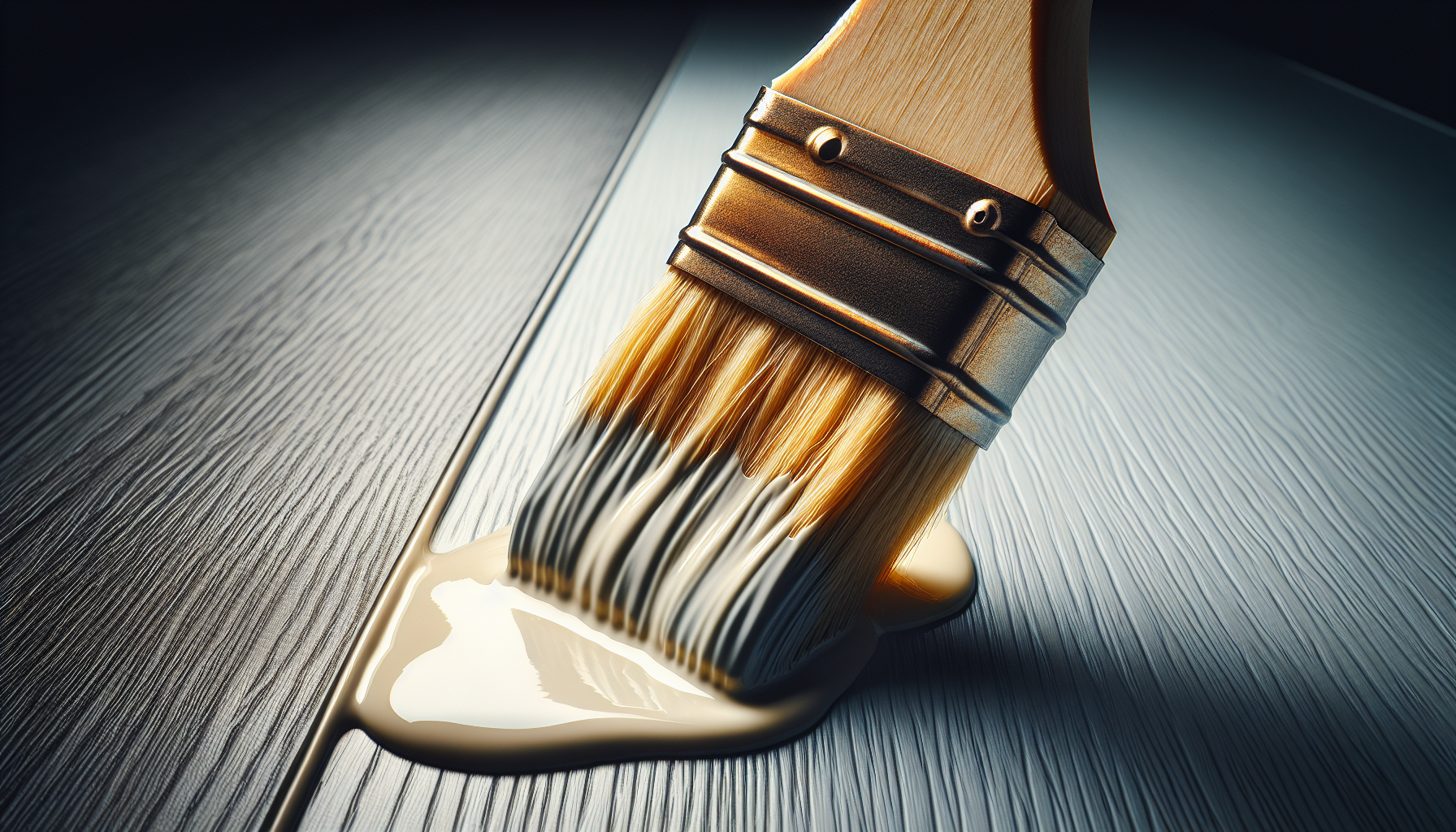In this article, you will discover the answer to a common concern: does chalk paint come out of clothes? Whether you have inadvertently stained your favorite garments with chalk paint or are simply curious about its stain-removal capabilities, this article will provide you with valuable insights and tips on how to effectively tackle chalk paint stains. From identifying the right techniques to sourcing the necessary materials, you will gain the confidence to restore your clothing to its former glory. So, let’s delve into the world of chalk paint stains and explore the solutions that will help you maintain both your style and your wardrobe.
How to Remove Chalk Paint Stains from Clothes
Chalk paint stains on clothes can be quite tricky to remove, but with the right techniques and immediate action, you can effectively eliminate these blemishes. In this comprehensive guide, we will walk you through step-by-step instructions on how to remove both wet and dry chalk paint stains from various types of fabric. Additionally, we will explore alternative methods and provide tips on preventing future stains. If all else fails, we will discuss when it might be necessary to seek professional help.

Immediate Action is Key
When dealing with chalk paint stains on clothes, it is essential to act swiftly. The longer the stain remains on the fabric, the harder it will be to remove. Here are some key things to keep in mind:
Blotting or Scrape off Excess Paint
Before attempting any stain removal techniques, it’s important to blot or scrape off any excess paint from the garment’s surface. This can be done using a clean white cloth, paper towels, or a dull knife or spoon. Be gentle to avoid spreading the stain further.
Avoid Rubbing or Smearing
Rubbing or smearing the chalk paint stain will only make matters worse. It can cause the paint to penetrate deeper into the fabric fibers, making it more difficult to remove. Always use a blotting or dabbing motion instead.
Prevent Spreading or Setting the Stain
To prevent the stain from spreading or setting, avoid applying heat to the affected area. Heat can cause the paint to melt and further embed into the fabric fibers. Similarly, avoid drying the garment in a dryer until the stain has been completely removed.
Tools and Materials Needed
Before you begin the stain removal process, gather the necessary tools and materials. Having everything prepared will save you time and ensure a smoother cleaning experience. Here is a list of items you will need:
Clean White Cloth
A clean white cloth will be your go-to tool for blotting and treating the chalk paint stain. Using a white cloth avoids the risk of color transfer from the cloth onto your clothing.
Paper Towels
Paper towels are not only helpful for blotting excess paint but also for absorbing any liquids used in the stain removal process. They are disposable and can be easily discarded after use.
Dull Knife or Spoon
A dull knife or spoon comes in handy for gently scraping off any dried paint from the fabric surface. Be cautious not to damage or snag the fabric while doing so.
Liquid Dish Soap
Liquid dish soap is an effective cleaner for many types of stains, including chalk paint. Choose a gentle soap that does not contain bleach or harsh chemicals.
Stain Remover
A commercial stain remover specifically formulated for removing paint stains can be highly effective in tackling chalk paint stains. Choose a suitable stain remover based on the fabric type and follow the manufacturer’s instructions.
Bucket or Sink
Having a bucket or sink filled with water will be essential for rinsing and soaking the stained garment during the stain removal process.
Testing the Fabric
Before applying any stain removal techniques, it is crucial to test the fabric for colorfastness and sensitivity to the cleaning products being used. Here’s how to perform a fabric test:
Performing a Spot Test
Choose an inconspicuous area of the garment, such as an inside seam or hem, and apply a small amount of the cleaning solution. Gently blot the area and observe for any adverse reactions, such as color fading or fabric damage. If there are no negative effects, you can proceed with confidence.
Checking the Garment’s Care Label
Always refer to the care label of the garment for any specific instructions or restrictions regarding stain removal. Some fabrics require special care or professional cleaning, so it’s essential to follow the manufacturer’s recommendations.
Understanding Fabric Type
Different fabrics may require different stain removal techniques. It’s important to understand the fabric type of your garment to determine the most suitable approach. Natural fibers like cotton and linen may respond differently to stain removal methods compared to synthetic fibers like polyester or nylon. Consider the fabric’s characteristics and adjust your stain removal approach accordingly.
Removing Wet Chalk Paint
Removing wet chalk paint from clothes requires immediate action to prevent the stain from setting. Follow these steps to effectively tackle a wet chalk paint stain:
Blotting with Paper Towels
Start by blotting the stained area gently with a clean white cloth or paper towels. This will absorb as much of the wet paint as possible before it has a chance to soak into the fabric.
Rinsing Under Cold Water
Hold the stained area under cold running water to flush out any remaining paint. The cold water will help to loosen the paint particles and prevent them from adhering to the fabric.
Treating with Dish Soap
Apply a small amount of liquid dish soap directly onto the stained area. Gently work the soap into the fabric using your fingers or a clean cloth. Allow it to sit for a few minutes to penetrate the stain.
Machine Washing or Hand Washing
After treating the stain with dish soap, thoroughly rinse the garment once again under cold water. Check the fabric care label to determine if the garment should be machine washed or hand washed. Follow the instructions accordingly, ensuring to use the recommended water temperature.

Removing Dry Chalk Paint
When dealing with dry chalk paint stains, the removal process can be slightly more challenging. However, with the right techniques, you can still effectively eliminate them. Follow these steps to remove dry chalk paint from clothes:
Scraping off Dried Paint
Using a dull knife or spoon, gently scrape off any dried paint from the fabric surface. Be careful not to damage the fabric while doing so.
Brushing or Scrubbing Gently
After scraping off the dried paint, use a soft-bristled brush or toothbrush to gently brush away any remaining loose particles. Avoid scrubbing forcefully, as this can cause the paint to embed further into the fabric fibers.
Soaking in Soapy Water
Prepare a solution of warm water and a small amount of liquid dish soap in a sink or bucket. Place the stained garment in the soapy water, ensuring that the stain is fully submerged. Allow it to soak for 15-30 minutes to loosen the paint.
Washing in Hot Water
After soaking, remove the garment from the soapy water and thoroughly rinse it under cold running water. Check the fabric’s care label to determine if the garment can withstand hot water washing. If possible, wash the garment in the hottest water suitable for the fabric type to help break down and remove the paint stain.
Using Commercial Stain Removers
If the aforementioned methods do not sufficiently remove the chalk paint stain, using a commercial stain remover can be a viable option. Here’s how to effectively use a commercial stain remover:
Choosing an Appropriate Stain Remover
Select a commercial stain remover that is specifically designed for paint stains. Read the product label carefully to ensure it is suitable for the fabric type and stain you are dealing with.
Applying and Following Instructions
Follow the instructions provided by the stain remover manufacturer. Typically, this involves applying the product directly onto the stain, allowing it to sit for a specified amount of time, and then washing the garment following the fabric care label instructions.
Washing the Garment Afterwards
After treating the stained area with a commercial stain remover, wash the garment as directed on the care label. Ensure that the stain is completely gone before drying the garment, as heat can set a remaining stain.
Alternative Methods
If the above methods do not completely remove the chalk paint stain, there are several alternative methods you can try. These methods may be particularly useful for stubborn or older stains. Here are some alternative methods to consider:
Vinegar and Baking Soda
Create a paste by mixing equal parts vinegar and baking soda. Apply the paste to the stained area and gently work it into the fabric using a cloth or soft brush. Allow it to sit for a few minutes before rinsing and washing the garment.
Ammonia Solution
Mix one part ammonia with three parts water to create a diluted ammonia solution. Dab the solution onto the stained area using a clean cloth. Rinse the garment thoroughly after a few minutes and wash it as usual.
Hairspray
Spray a small amount of hairspray directly onto the stain. Blot the area gently with a clean white cloth to lift the paint. Rinse the garment under cold water and wash it according to the care label instructions.
Hydrogen Peroxide
Apply a small amount of hydrogen peroxide directly onto the stained area and gently dab it with a clean white cloth. Rinse the fabric thoroughly under cold water and wash it as usual.
Lemon Juice
Squeeze fresh lemon juice onto the stain and allow it to sit for a few minutes. Rinse the garment under cold water, then wash it following the care label instructions.
Salt Paste
Mix salt with water to create a thick paste. Apply the paste to the stain and gently rub it into the fabric. Allow it to sit for a few minutes before rinsing and washing the garment.
Preventing Future Stains
To minimize the likelihood of chalk paint stains on your clothes, it’s important to take preventative measures. Here are some tips to help you avoid future stains:
Covering Clothes or Wearing an Apron
When working with chalk paint, consider covering your clothes with a protective apron or wearing old clothing that you don’t mind staining. This will help shield your garments from accidental splatters or spills.
Protecting Work Area
Cover your work area with a drop cloth or newspaper to catch any paint drips or splatters. This will prevent the paint from landing on your clothes in the first place.
Painting Techniques to Minimize Splatter
Adopt painting techniques that minimize splattering, such as using a fine-bristle brush or roller and applying paint smoothly. This can help reduce the chances of paint reaching your clothing.
Special Considerations for Different Fabrics
Different fabric types may require unique attention and care when removing chalk paint stains. Here are some fabric-specific considerations:
Delicate Fabrics
For delicate fabrics like silk or lace, it is advisable to seek professional help for stain removal. These fabrics require extra care to avoid damage or discoloration.
Synthetic Fabrics
Synthetic fabrics like polyester or nylon are generally easier to clean compared to natural fibers. You can follow the general stain removal methods outlined above, adjusting as needed for the specific fabric.
Wool or Cashmere
Wool or cashmere garments should be handled with care. Consider consulting a professional cleaner for stain removal to prevent damaging the fabric.
Seeking Professional Help
If your efforts to remove the chalk paint stain have been unsuccessful or if you are dealing with a particularly delicate or expensive item, it may be wise to seek professional help. Professional cleaners have the experience and knowledge to tackle even the most stubborn stains without causing harm to your clothing. Consult with a reputable cleaner in your area, providing them with the necessary information about the stain and the fabric, to ensure the best possible outcome.
In conclusion, while chalk paint stains on clothes can be a nuisance, they can be effectively removed with prompt action and the right techniques. By following the step-by-step instructions provided in this comprehensive guide, you are equipped to tackle both wet and dry chalk paint stains on various fabric types. Remember to test the fabric, choose the appropriate cleaning method, and take preventative measures to minimize future stains. If needed, don’t hesitate to seek professional assistance for delicate or challenging stain removal situations. With the proper approach, you can restore your clothes to their former glory and eliminate those stubborn chalk paint stains once and for all.



